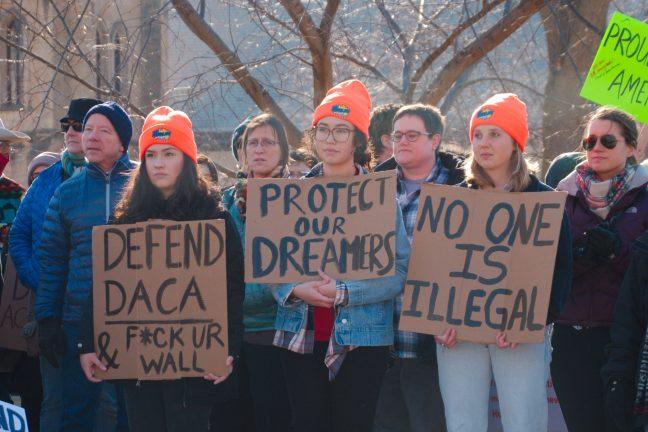President Trump brings particular momentum to the debate over immigration — legal and illegal. Trump has called on congressional Republicans to use the “Nuclear Option” to pass strict anti-immigration legislation and do away with the Deferred Action for Childhood Arrivals program.
Additionally, Trump has imposed several travel bans to keep individuals out from multiple countries, the most recent version targeting people from Iran, Libya, North Korea, Somalia, Syria, Venezuela and Yemen. Immigrants, refugees and visa holders are among those affected by this version of the ban, which the Supreme Court will examine Wednesday.
Earlier this month, Trump added yet another facet to his already-rocky relationship with immigration to the U.S. and announced plans to deploy several thousand National Guard troops to the U.S border with Mexico. This plan comes in light of the failure to secure $25 billion for a border wall, one of the hallmarks of Trump’s 2016 presidential campaign. Despite logistical problems with the deployment, Trump seems confident in his approach to securing the southern border.
“Until we can have a wall and proper security we’re going to be guarding our border with the military,” Trump said. “That’s a big step.”
It is a big step. Trump’s choice to militarize the border and fight potential violence with violence follows generally-accepted narratives about violence from undocumented immigrants in the U.S., but a recent study could prove Trump’s choice to be somewhat misguided.
A new University of Wisconsin study concludes undocumented immigration does not increase violent crime. In fact, “undocumented immigrants reduce the rate of violent crime in the United States … despite immigrants struggling with many socioeconomic factors shared by people who are more likely to commit crimes.”
There are many reasons to believe undocumented immigrants add to crime. Researcher and sociology professor Michael Light explained “it’s hard for them to get steady employment, hard to find solid footing in terms of housing. Poverty rates are higher and educational attainment is lower.”
These factors are often associated with high-crime populations, but there exist other factors that show why more undocumented immigrants in the U.S. does not mean there will be more crime.
“Immigrants are driven by the pursuit of education and economic opportunities for themselves or their families,” Light said. “Moreover, migration — especially undocumented migration — requires a lot of motivation and planning.”
Motivation and planning to come to America in hopes of greater education and economic opportunities are not often associated with high-crime populations. This side of the story is incredibly important in America what with immigration being such a hotly-debated issue.
This study provides an alternative narrative to the one Trump relays to his supporters and the press and it may be the other side of the point-counterpoint debate America so desperately needs. Whether someone supports the deployment of troops to the border, or even a wall, he or she needs to see both sides of the argument and realize the association of violence with undocumented immigration may not be supported by data trends.
This includes Trump, and he more than anyone else needs to understand how data applies to his decisions when they carry so much weight and have potentially devastating consequences. Immigration is such a large-scale issue with many moving pieces, but this study can bring clarity to at least one aspect of the debate.
The results of this study show violence from undocumented immigrants cannot be the justification for the militarization of the border. Deploying thousands of troops reinforces the unfortunate generalization undocumented immigration and violence go hand in hand and puts tension on an already-stressed relationship between the U.S. and Mexico. If Trump wants to target violence and crime in America, he should look elsewhere.
Juliet Dupont (jdupont@wisc.edu) is a freshman intending to major in political science and journalism.


